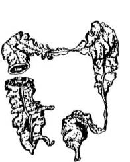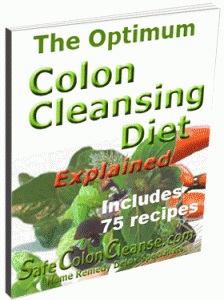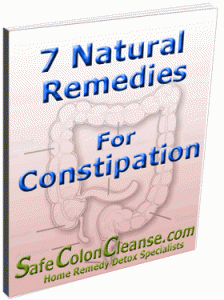How The Colon Works
What is the Colon?
The colon also called the “large intestine,” is the end of our digestive tract. It is a muscular tube about 1.6 meters (5.5 feet) in length and 6.5 cm (2.5 inches) in diameter.
It is made up of six parts:
- the cecum
- the ascending colon
- the transverse colon
- the descending colon
- the sigmoid and
- the rectum

To best understand how the colon works it’s important to quickly review how our entire digestive process functions.
How Digestion Works
- We see or smell food which causes our salivary glands to secret alkaline saliva (pH 8.0)
- As we chew the food, glands in our mouths secret ptyalin, a type of the enzyme amylase which begins to break down the molecular carbohydrate structure of the food – (the more we chew, the easier the food is to break down later – this alone can greatly improve digestion)
- The masticated food passes through the esophagus and into the stomach.
- In the stomach, the food is bathed in hydrochloric acid (pH 0.8) to kill pathogens and mixed with pepsinogen enzymes. This breaks the food down into a liquid substance known as chyme.
- Chyme then passes through the pyloric value, past the “Brunners glands” and into the duodenum where it is fully alkalized (pH 8.9)
- The liver creates bile, which is stored in the gallbladder, to detoxify any harmful substances in the chyme and prepare it to be absorbed by the small intestine.
- The pancreas and the gallbladder release the enzymes amylase, lipase, and protease to divide carbohydrates, fats, and proteins into simple sugars, fatty acids, and amino acids respectively.
- The purified and simplified chyme then moves into the small intestine where 22 other enzymes mix with it and where nutrients are absorbed by tiny surfaces called microvilli.
- After 1-12 hours, depending on the food eaten, chyme moves from the small intestine through the ileocecal valve and into the cecum, or bottom of the ascending colon. *Note: this is where parasites often dwell in unhealthy people.
- The chyme moves up the ascending colon, across the transverse, down the descending to the rectum and out through the anus through a process called peristalsis. Up to 40% of what is eliminated from the colon is bacteria. The other 60% consists of indigestible solid matter.
In the digestive process, the colon’s main functions are to:
- compact the chyme (liquefied food)
- absorb excess water from the chyme
- receive the B vitamins that are produced by healthy intestinal bacteria
- move compacted chyme and dead bacteria into the rectum and out of the body
How the Colon Affects Health
As the major “sewage system” of the body, it’s hard to overestimate the importance of the colon to overall health. Simply put, when the colon is clean the whole body works much better.
In his seminal book, “Colon Health,” Dr. Norman Walker carefully demonstrates that an improperly functioning colon affects every system and organ of the body.
There are 2 main ways that an unhealthy colon affects the rest of the body.
1. The colon can have up to nearly 20 kg (40 pounds) of stagnant feces in it. As it becomes heavy with excess solids the colon falls out of its natural alignment and puts pressure on various other organs and systems, causing them to malfunction.
Here is an example
 A Healthy Colon
A Healthy Colon
 An Unhealthy Colon
An Unhealthy Colon
2. The second way the colon can negatively affect health is called “autointoxication.” When the colon is sluggish or weak digestion and elimination are compromised and the body can poison itself. With a clogged colon, toxins remain inside of the body instead of being eliminated. Eventually, to protect itself, the body stores them in fat cells or in the mucus lining of the intestines
For these reasons, it’s definitely a good idea to keep your colon working at its best. Here are 3 top colon cleansing recipes that are easy to make and proven to get great results. You can get more details by clicking on the highlighted text.




